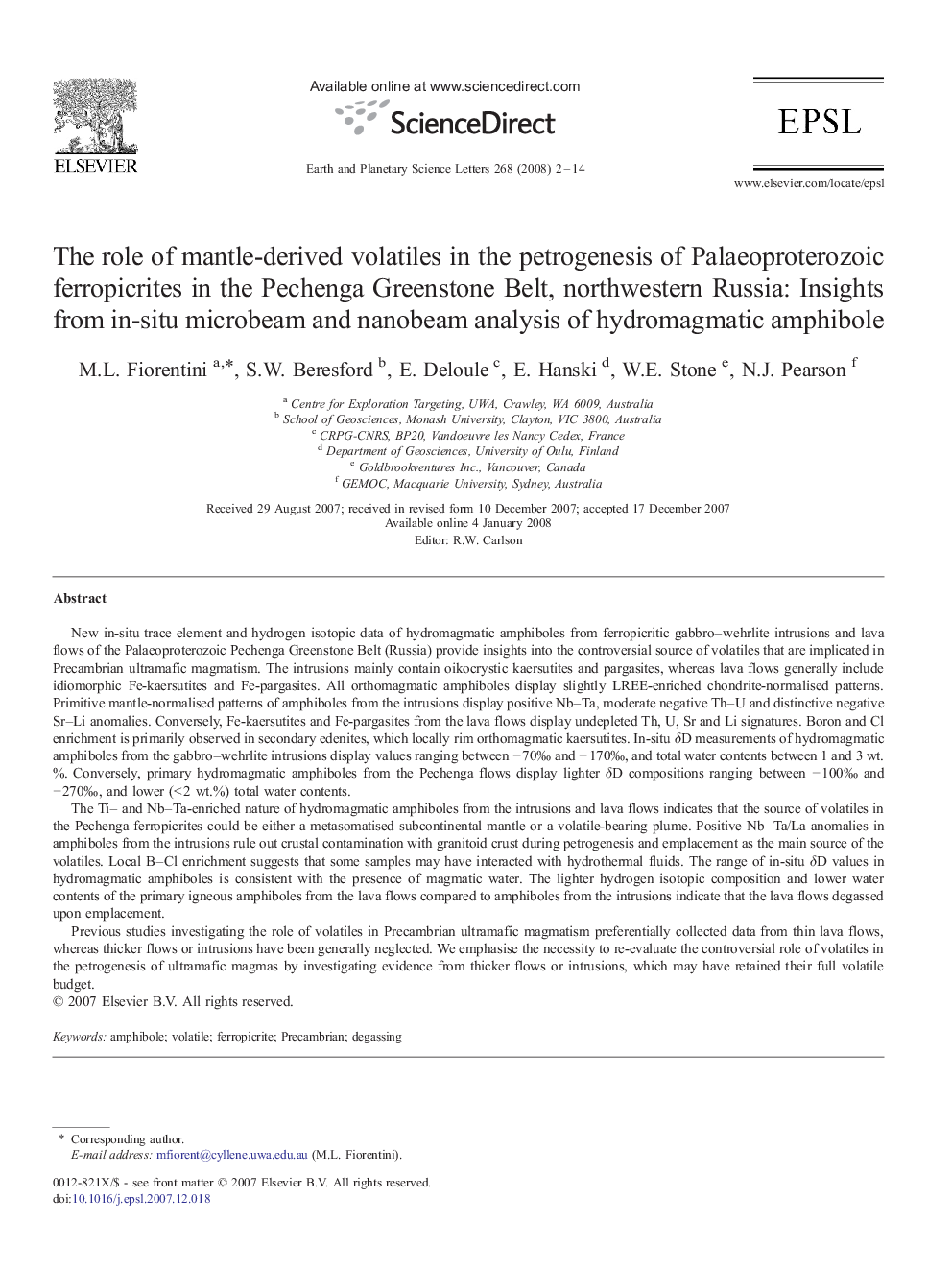| کد مقاله | کد نشریه | سال انتشار | مقاله انگلیسی | نسخه تمام متن |
|---|---|---|---|---|
| 4679742 | 1634899 | 2008 | 13 صفحه PDF | دانلود رایگان |

New in-situ trace element and hydrogen isotopic data of hydromagmatic amphiboles from ferropicritic gabbro–wehrlite intrusions and lava flows of the Palaeoproterozoic Pechenga Greenstone Belt (Russia) provide insights into the controversial source of volatiles that are implicated in Precambrian ultramafic magmatism. The intrusions mainly contain oikocrystic kaersutites and pargasites, whereas lava flows generally include idiomorphic Fe-kaersutites and Fe-pargasites. All orthomagmatic amphiboles display slightly LREE-enriched chondrite-normalised patterns. Primitive mantle-normalised patterns of amphiboles from the intrusions display positive Nb–Ta, moderate negative Th–U and distinctive negative Sr–Li anomalies. Conversely, Fe-kaersutites and Fe-pargasites from the lava flows display undepleted Th, U, Sr and Li signatures. Boron and Cl enrichment is primarily observed in secondary edenites, which locally rim orthomagmatic kaersutites. In-situ δD measurements of hydromagmatic amphiboles from the gabbro–wehrlite intrusions display values ranging between − 70‰ and − 170‰, and total water contents between 1 and 3 wt.%. Conversely, primary hydromagmatic amphiboles from the Pechenga flows display lighter δD compositions ranging between − 100‰ and − 270‰, and lower (< 2 wt.%) total water contents.The Ti– and Nb–Ta-enriched nature of hydromagmatic amphiboles from the intrusions and lava flows indicates that the source of volatiles in the Pechenga ferropicrites could be either a metasomatised subcontinental mantle or a volatile-bearing plume. Positive Nb–Ta/La anomalies in amphiboles from the intrusions rule out crustal contamination with granitoid crust during petrogenesis and emplacement as the main source of the volatiles. Local B–Cl enrichment suggests that some samples may have interacted with hydrothermal fluids. The range of in-situ δD values in hydromagmatic amphiboles is consistent with the presence of magmatic water. The lighter hydrogen isotopic composition and lower water contents of the primary igneous amphiboles from the lava flows compared to amphiboles from the intrusions indicate that the lava flows degassed upon emplacement.Previous studies investigating the role of volatiles in Precambrian ultramafic magmatism preferentially collected data from thin lava flows, whereas thicker flows or intrusions have been generally neglected. We emphasise the necessity to re-evaluate the controversial role of volatiles in the petrogenesis of ultramafic magmas by investigating evidence from thicker flows or intrusions, which may have retained their full volatile budget.
Journal: Earth and Planetary Science Letters - Volume 268, Issues 1–2, 15 April 2008, Pages 2–14